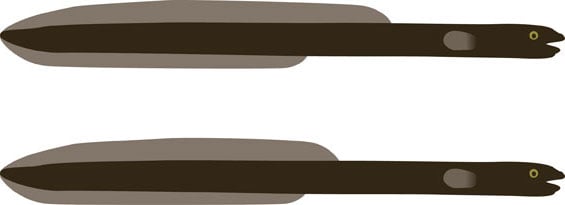In a thrilling expedition funded by Auckland Zoo, Pest Free Howick Ward team and local school students delved into the heart of Mangemangeroa Reserve, unearthing a wealth of biodiversity secrets.
Exciting Discoveries Unveiled in Mangemangeroa Reserve!
eDNA Results
eDNA (short for ‘environmental DNA’) are little strands of DNA that get left behind by all creatures. For example, if you were to walk through a stream, you might leave behind eDNA from small flakes of skin that drift away in the water. The water samples that we filtered through special syringes were sent to Wilderlab in Wellington to look for signs of eDNA belonging to threatened species. On the day, we were only able to collect one sample, however, the Pest Free Howick team collected two more samples in December and February to paint a better picture of the creatures living in and around the estuary.
Many species were detected by the eDNA tests. These ranged from freshwater fish like the common bully, estuarine triplefin, banded kokopu, and īnanga (whitebait), to kereru (New Zealand pigeon), kotare (kingfisher), sheep, and even pet dogs! The most exciting result was confirmation of both long-fin and short-fin eels living in the estuary.
The short-fin eel is relatively common in New Zealand, however, the long-fin eel is one of the threatened species that we were hoping to find! Right now these eels will be migrating to the Pacific ocean for their breeding season. They will be returning to the estuary later in the year. Long-fin eels are particularly special because of their long life spans. They are capable of surviving up to 80 years in a healthy natural environment!

Trail Cameras
While we were hoping to find signs of the critically endangered Australasian bittern, we did find one very cunning stoat! This is the same stoat that was detected a few weeks beforehand. Unfortunately, the DOC200 stoat trap that we set up hasn’t caught anything, but let’s keep our fingers crossed!
Stoats are one of the major introduced predators responsible for declines in New Zealand native wildlife. They are incredibly intelligent carnivores that have already contributed to the extinctions of five New Zealand bird species. They have also added many more to the threatened species list. Stoats are small, fast moving, and hunt during both night and day – so, just because you don’t see them, doesn’t mean they aren’t out there!
Bittern Recording Devices
These audio recordings haven’t been processed yet, however, we are currently working to get these finished. We will let you know what we find in the coming months!
We enjoyed learning about some of the history and ecology of Mangemangeroa Reserve. The valley is a unique area that is especially significant to our local iwi Ngai Tai ki Tamaki who have inhabited the valley for hundreds of years. It is also the last fully intact piece of coastal forest in the Auckland region.

© Copyright 2024 - PEST FREE HOWICK WARD
A Howick Local Board funded project
